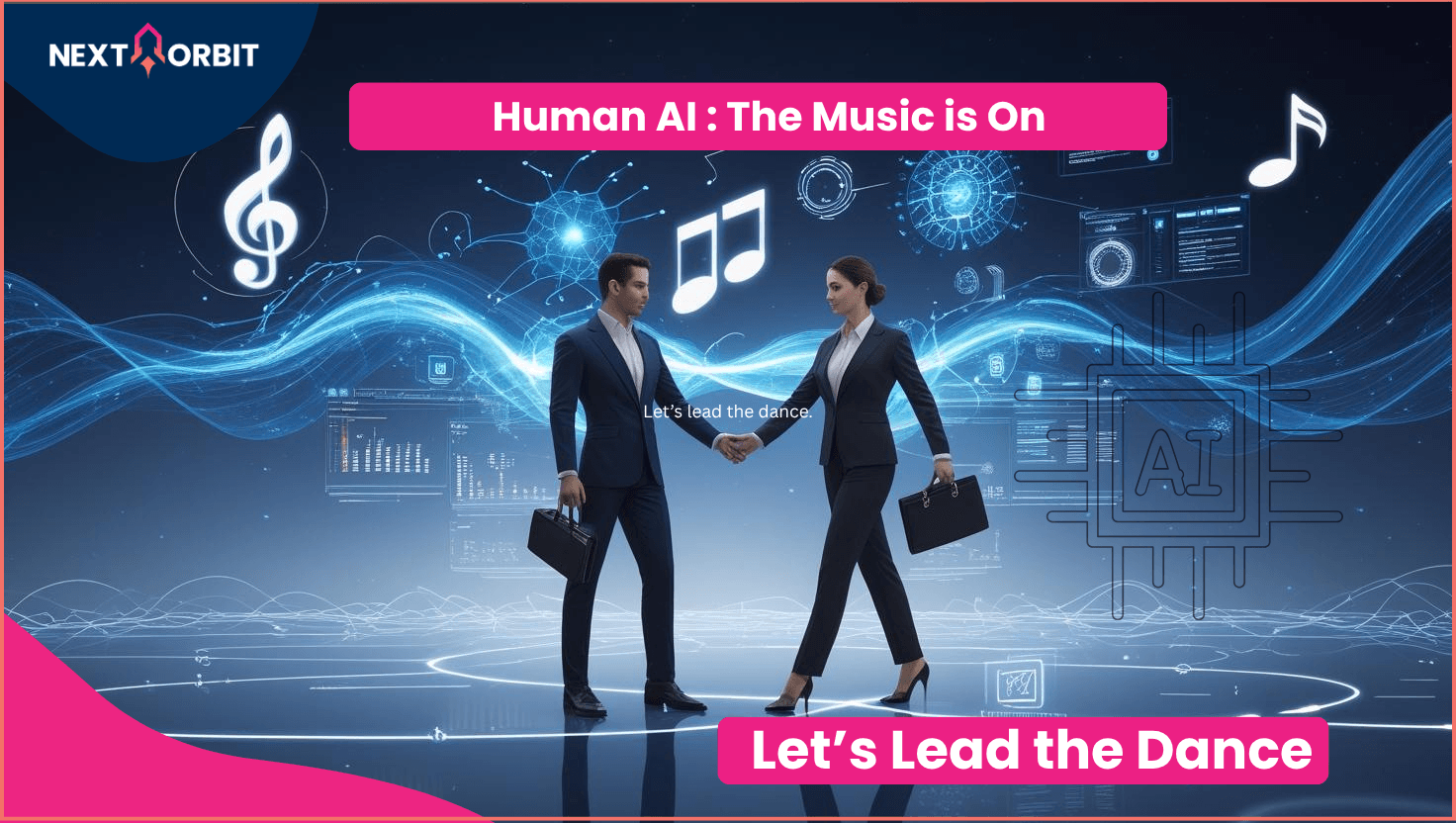Imagine you’re watching a dance performance where two partners move in perfect harmony. Every step is coordinated, every turn synchronized. It’s graceful, beautiful, almost magical. But then imagine the same dancers out of sync, awkward stumbles, missed cues, a performance that makes you wince rather than wonder.
This is exactly where we stand today with artificial intelligence. We’re learning the steps to what might be the most important dance of our generation.
Let’s break this down. Not in quantum bits or algorithms, but in simple terms that you and I can vibe with.
The Shifting Harmony
Remember when corporate leaders assured us that AI would simply make us more productive? “Don’t worry,” they said, “AI won’t replace jobs, it’ll just make us better at them.” The narrative felt safe and comforting. It’s like a new instrument in the orchestra would only make the music richer, not replace any musicians.
Fast forward to now – something changed in recent months. The tune has changed. The words are different now. CEOs are now openly discussing significant job impacts, 20%, 30%, particularly in white-collar roles. What started as reassuring harmonies has evolved into something more complex, more real.
But here’s where it gets cosmic.
The GitHub Paradox
Thomas Dohmke, GitHub’s CEO, recently made a statement that seems to defy logic, and it was something along the lines of: “The world doesn’t need fewer software engineers. If anything, the world needs more software engineers.” ,
Wait, WHAT???
In an era where AI can write code faster than humans can think, why would we need more developers? This contradiction reveals something profound about our relationship with AI. We’re asking the wrong question entirely.
Breaking the Cake Mentality
Most of us think about AI as a zero-sum game. There’s a fixed-size cake of opportunities, and if AI takes a slice, there’s less for us. This scarcity thinking creates anxiety, resentment, and a defensive posture towards technological advancement.
But what if we’re completely wrong about the cake? The real move? Don’t protect your slice. Bake more cakes.
AI – Your Superpower Companion
Instead of imagining AI as a threat or competition, consider it as a companion. What if you had a companion with superpowers that you could control? A second brain, always on, always learning, tailored to your needs. Not a replacement for your abilities, but an amplification of them.
Think about it, really think about it. With unlimited creative and analytical power at your fingertips, would you worry about the size of someone else’s cake? Or would you start building your bakery?
This isn’t naive optimism. For the first time in human history, we’re approaching a reality where individual human potential could truly be limitless.
The Four Pillars of the AI-Era
Whether you’re a security engineer watching automation handle routine tasks or a site reliability engineer seeing systems become increasingly self-managing, the key isn’t to resist change; it’s to evolve with purpose.
In this new paradigm, from the professional relevance standpoint, it comes down to four fundamental contributions:
- Revenue Generation: Directly contributing to how your organization makes money
- Cost Reduction: Eliminating inefficiencies
- Risk Mitigation: Protecting the organization from threats and uncertainties
- Innovation: Creating new possibilities and competitive advantage.
When you align your work with any of these pillars and leverage AI as your thinking partner, your value is not only preserved but also exponentially enhanced.
Design Your Role
Here’s the most exciting part: You don’t need to wait for change to happen to you. You can start designing your future role today.
Think like a designer approaching a complex problem. What if you could redesign your current function from scratch? What would it look like if you had an AI companion that never sleeps, never forgets, and can process information at superhuman speeds?
Let’s take an example. Say you’re a cybersecurity analyst or a site reliability engineer. AI might automate parts of your job, but it won’t eliminate the problems your company faces. If anything, more problems will emerge. The goal isn’t to defend your current role like it’s sacred. The goal is to evolve it, adapt it, and design it for the new world.
This is the moment for thinking deep, not just for products, but for ourselves.
The Speed Mismatch
While AI development races ahead at breakneck speed, human development hasn’t stopped being important; it’s become more crucial than ever. But now it’s not about competing with AI, it’s about learning to dance with it.
The most successful professionals of the next decade won’t be those who resist AI or those who are replaced by it. They’ll be those who master the art of human-AI collaboration, who understand how to leverage artificial intelligence to amplify their uniquely human capabilities: creativity, empathy, strategic thinking, and the ability to navigate ambiguity.
Today is the Day
This isn’t science fiction. This is NOW. The transformation is happening now, in boardrooms and development labs, in startup offices and enterprise data centers. The question isn’t whether the dance will begin.
It’s On. The music is playing. Your AI partner is waiting.
Let’s Dance!

